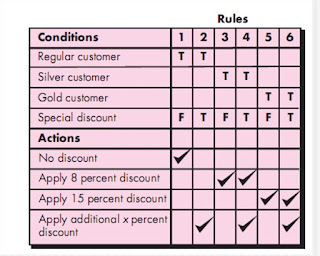Designing Traditional Components
Designing Traditional Components
- Introduction : Traditional components are designed based on different constructs like
- Sequence,
- Condition,
- Repetition.
- Sequence implements processing steps that are essential in the specification of any algorithm.
- Condition provides the facility for selected processing based on some logical occurrence.
- Repetition allows for looping.
- These three constructs are fundamental to structured programming— an important component-level design technique.
- The use of the structured constructs reduces program complexity and thereby enhances readability, testability, and maintainability.
- The use of a limited number of logical constructs also contributes to a human understanding process that psychologists call chunking.
- Graphical Design Notation
- A picture is worth a thousand words,” but it’s rather important to know which picture and which 1000 words.
- There is no question that graphical tools, such as the UML activity diagram or the flowchart, provide useful pictorial patterns that readily depict procedural detail.
- The activity diagram allows you to represent sequence, condition, and repetition— all elements of structured programming.
- It is a descendent of an earlier pictorial design representation (still used widely) called a flowchart.
- A flowchart, like an activity diagram, is quite simple pictorially. A box is used to indicate a processing step. A diamond represents a logical condition, and arrows show the flow of control

- Tabular Design Notation
- In many software applications, a module may be required to evaluate a complex combination of conditions and select appropriate actions based on these conditions.
- Decision tables provide a notation that translates actions and conditions into a tabular form.
- The table is difficult to misinterpret and may even be used as a machine-readable input to a table-driven algorithm.

- Program Design Language
- Program design language (PDL), also called structured English or pseudocode,
- It incorporates the logical structure of a programming language with the free-form expressive ability of a natural language (e.g., English).
- Narrative text (e.g., English) is embedded within a programming language-like syntax.
- Automated tools can be used to enhance the application of PDL.
- A basic PDL syntax should include constructs for
- Component definition,
- Interface description,
- Data declaration,
- Block structuring,
- Condition constructs,
- Repetition constructs,
- Input-output (I/O) constructs.
- It should be noted that PDL can be extended to include keywords.



Traditional components within the designing which is really informative to know about. Thank you so much. Kovai IT software solutions | Best IT company in coimbatore
ReplyDeletethanks for the information keep uploading this type of content
ReplyDeletethanks for uploading this information
ReplyDeleteThank you for taking the time to provide us with your valuable information.
ReplyDeleteHow to know about active passive Components
Great points! If you want to practice with expert guidance, check out IELTS Exam Preparation & Online Classes for interactive learning.
ReplyDelete